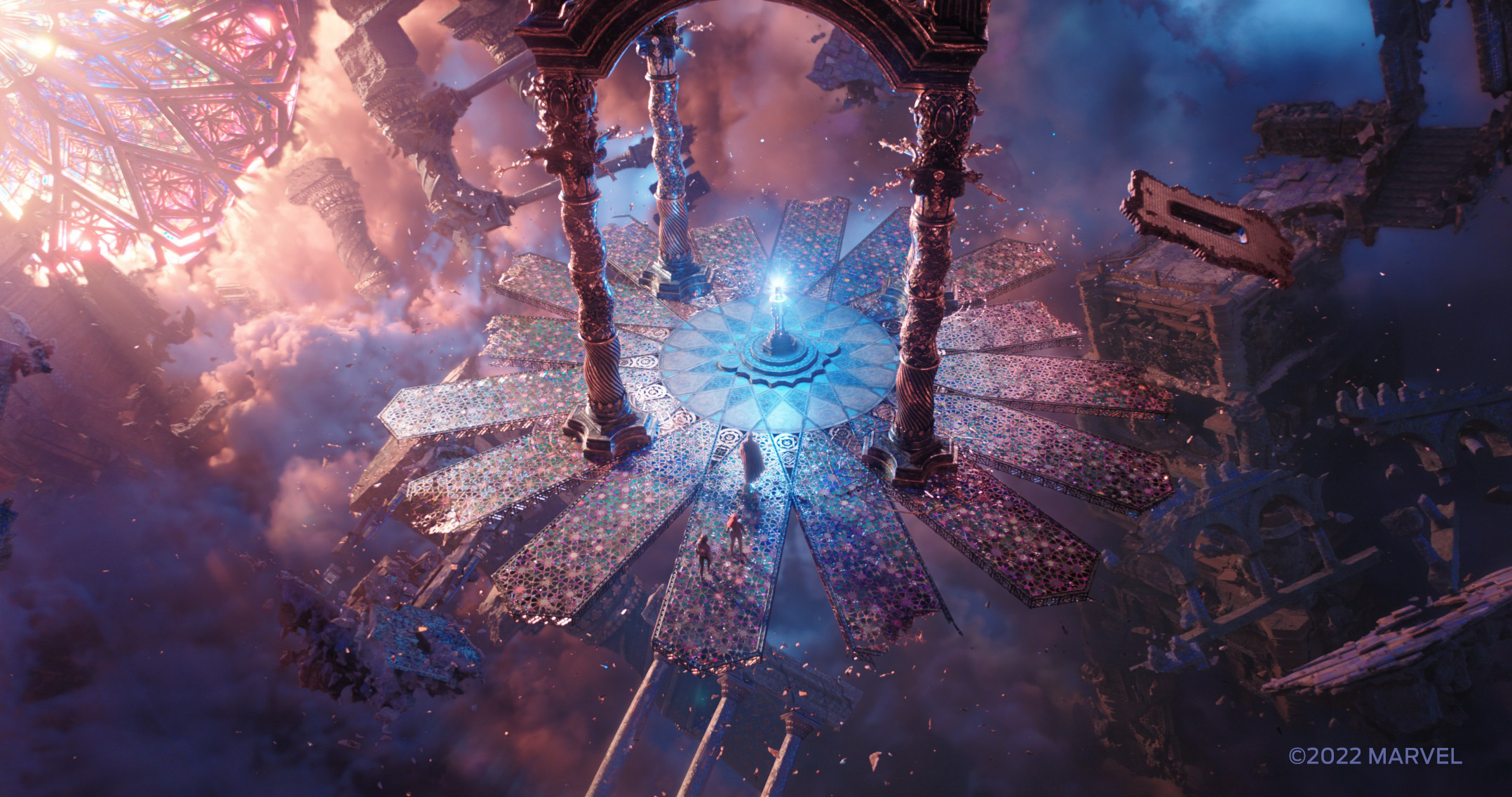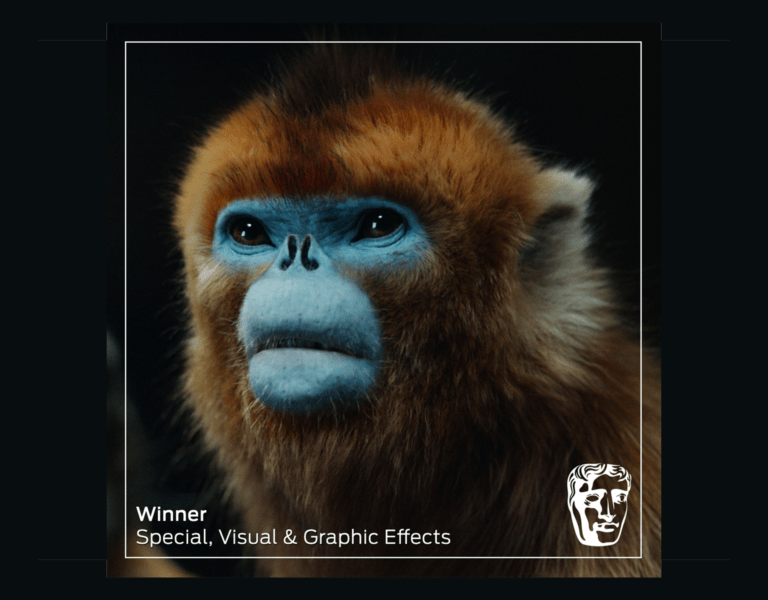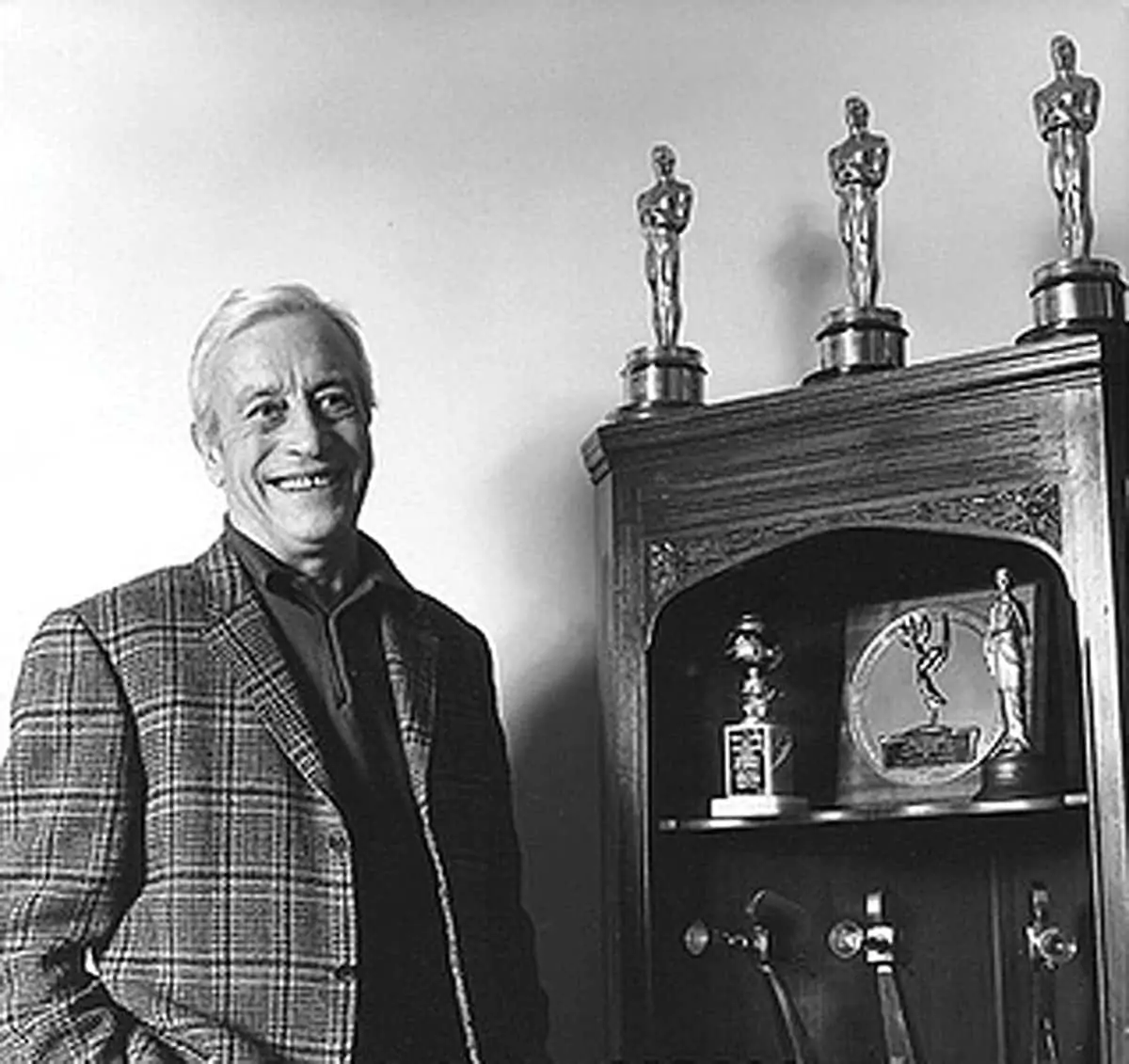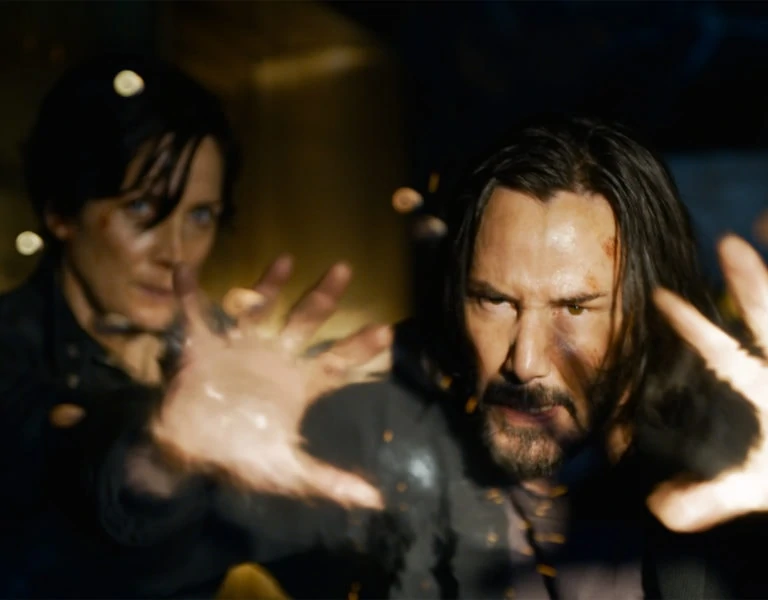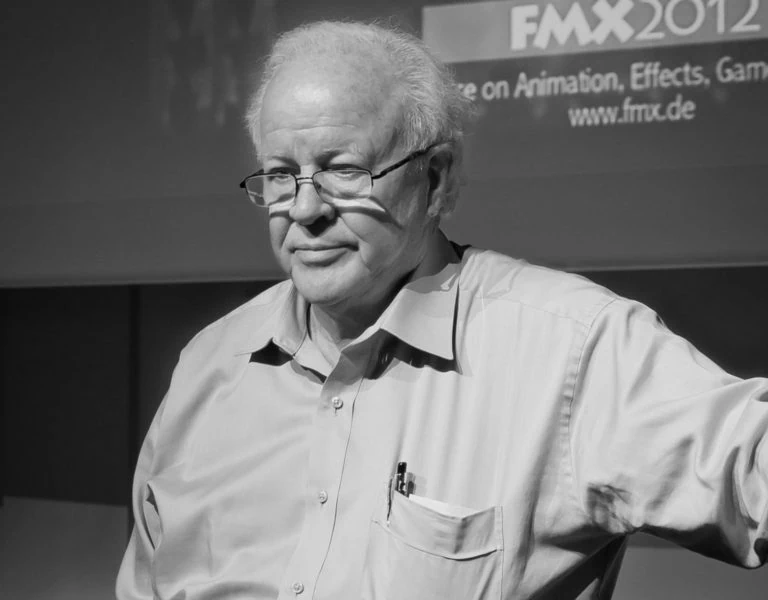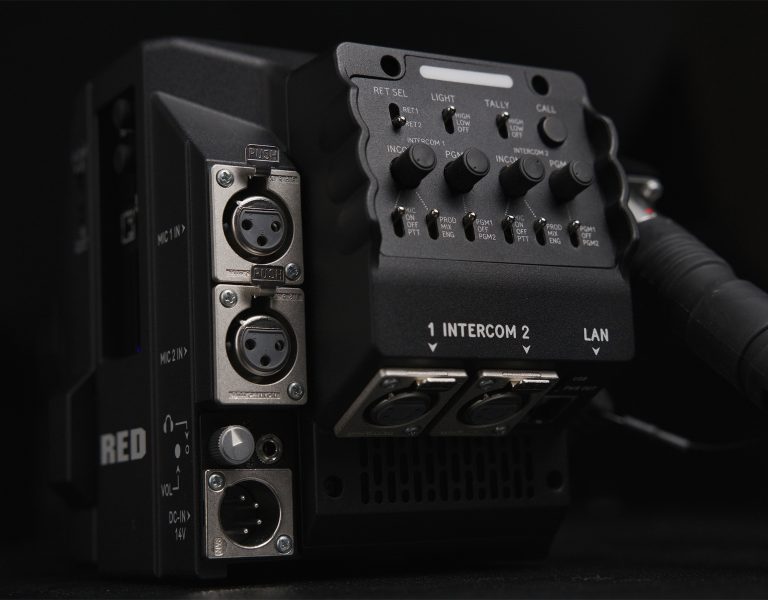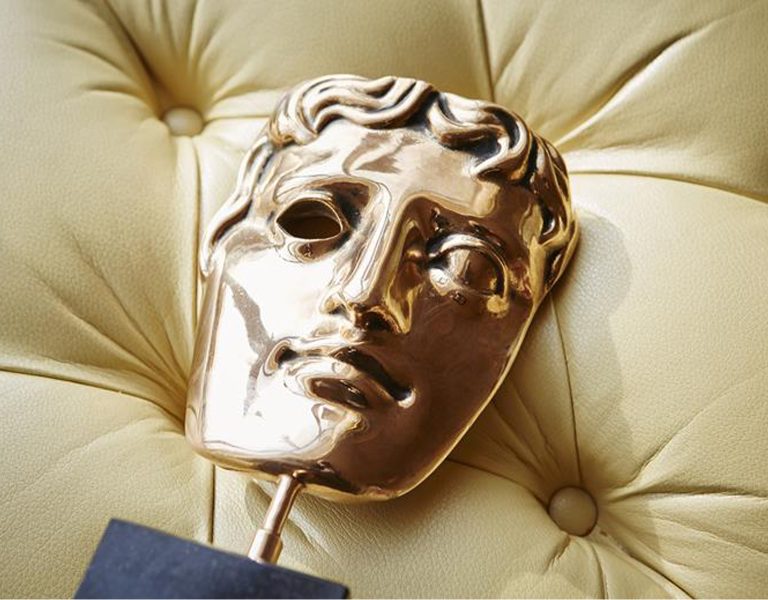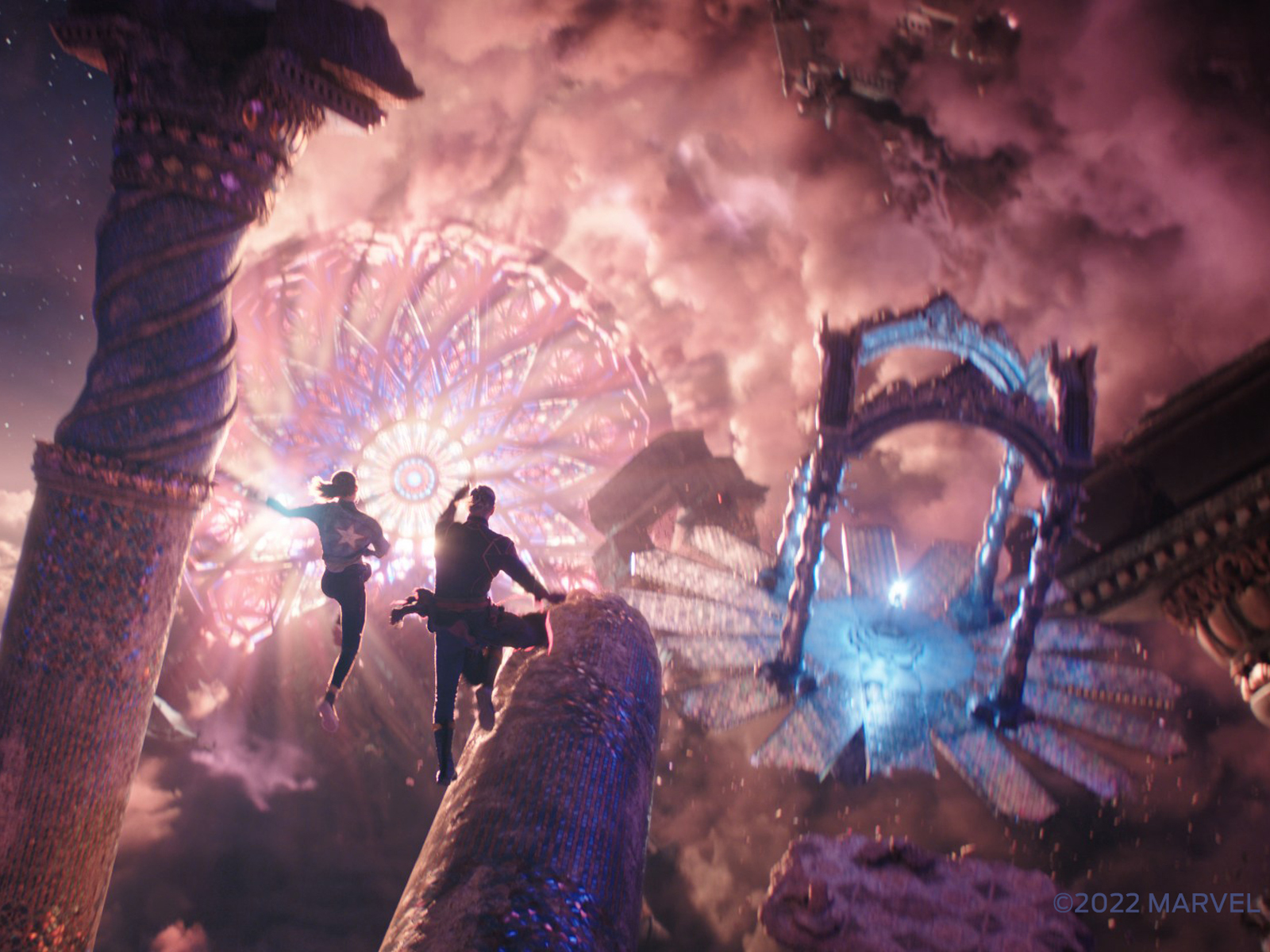
Framestore entered the multiverse with Marvel Studios’ latest action-packed offering, Doctor Strange in the Multiverse of Madness. This sequel to Doctor Strange pulls at the thread loosened by the earth-shattering events of Spider-Man: No Way Home and WandaVision, and unravels vast secrets of not just one universe, but several of them.
Framestore’s 156 VFX-heavy shots were delivered from its London studio, and supervised by Alexis Wajsbrot – a frequent collaborator with the MCU for the last decade, and CG supervisor for Doctor Strange in 2016.
“Whenever you enter the MCU you know you’re in for a wild ride, but getting to explore the Multiverse with a director like Sam Raimi takes things to a whole new level,” says VFX supervisor Alexis Wajsbrot. “From intricate simulations and lighting challenges to note-perfect digidoubles, stunning environments and some fantastically creative FX work, The Multiverse of Madness really put us through our paces. Plus you have a sequence like the portal ride, which was just a blast – that gave us the chance to put something truly audacious together.”
Framestore’s Pre-Production Services (FPS) joined the project before filming began to previs the opening sequence, working closely with director Sam Raimi. “We were constantly sharing progress with the Visual Development team, so we were able to see how the post-production team was approaching the creature and environment design, and really take those ideas and run with them,” explains Visualisation Supervisor Kaya Jabar. “We designed our shots to help drive a more cohesive vision for the scene, that went beyond just character and camera blocking.”
The Vishanti Temple
“The story opens with a battle in the Vishanti temple, set among the clouds in a space between universes, which Doctor Strange (Benedict Cumberbatch) visits to obtain the book of Vishanti. He is chased away by a fiery ribbon monster, who stabs him and apprehends his companion, America Chavez (Xochitl Gomez). Working with production designer Charles Wood, the Framestore team drew inspiration for the temple environment from all over the world. “Charles Wood made some magnificent concepts,” says VFX supervisor Alexis Wajsbrot. “The main dais has a lot of Portuguese influence, with hints of the Vatican. The big windows in the background were inspired by Notre Dame, along with some Moroccan architectural influence.” Framestore’s Pre-Production team worked closely with the Art Department to help bring their designs into the scene, showing how the large pieces of the temple could move, and serve as a pathway for the characters. “With an environment that is constantly moving, and characters on multiple planes of gravity, it was important to be able to demonstrate how each shot needed to be executed on a green screen stage,” adds visualisation supervisor Kaya Jabar. The techvis stage was instrumental in visualising the action on the built set pieces, and breaking down shots into multiple passes for each character to sell the different orientations of the temple. Framestore’s Pre-Production Services (FPS) team worked closely with on-set VFX supervisor Jörundur Rafn Arnarson to define the shoot methodology in order to execute the previs.
“As Doctor Strange and America are standing on moving and rotating debris, it was impossible to predict where the sun (in this case, the giant stained glass rose window) would be at any given moment on set,” explains Wajsbrot. “Most of the time, we had to relight the plate in comp in order to accommodate where the light source was.” On set, DOP John Mathieson had set up a rotating light rig so the lighting on the actors was rotating from blue to red. The main challenge was how to match this lighting onto the temple debris as well as on the environment of clouds. “The environment had to be pre-comped so that the VFX team working on the stained glass dais could refract the light correctly in the scene” adds Wajsbrot.
“We rendered most of the environment white, to give the Comp department maximum control over the lighting colour and intensity for each shot, whether it’s coming from a mysterious undercloud glow, offscreen nebula, star light, or the huge stained glass window,” says Environment Supervisor Matthew Chandler.
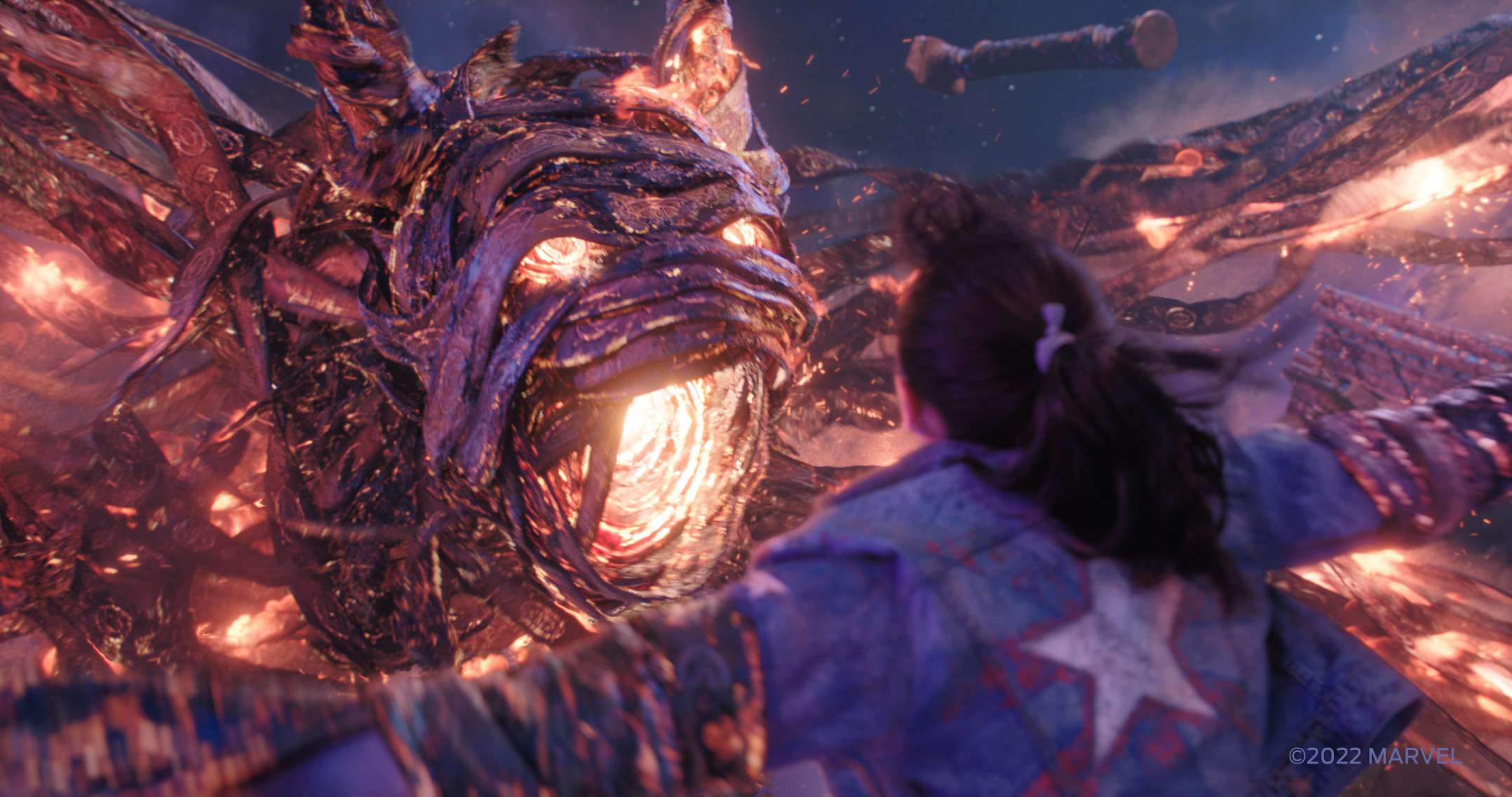
Enter the Demon
Upon receiving some sketches from Marvel, the Framestore team began compiling some concept art to flesh out the details of the creature. Associate animation supervisor James King and team produced movement tests to define how the demon would look, separate and reform, and move. “We did a lot of motion study” adds Wajsbrot, “to see how the creature would be capable of moving – it begins the scene moving like an underwater creature, the ribbons reminiscent of tentacles, but becomes more spider-like as it holds itself up and moves across the solid dais surface.”
The CG team worked to establish a logic to the ribbons that make up the creature. Thanks to a clever setup built by lighting lead Andre Hitsoy, each of the fiery ribbons progressed from clean leather, to charred leather and burning edges, before ending with fire and ash. Framestore’s FX team then produced animated maps that would drive each stage of this evolution. “We ran a dynamics pass on the ribbons we got from animation to bring more secondary motion and give a sense of believability” says FX Lead Jonathan Lyddon-Towl. “We then ran simulations on the character, building layers of fire, smoke, haze, ash and embers until we got a distinct look and feel.”
For each shot, the Framestore team had to artfully direct the fire: its details, placement and wind direction.”The fire is tied to the narrative of the scene” explains Wajsbrot, “as the creature becomes more and more angry, the fire becomes more intense.”
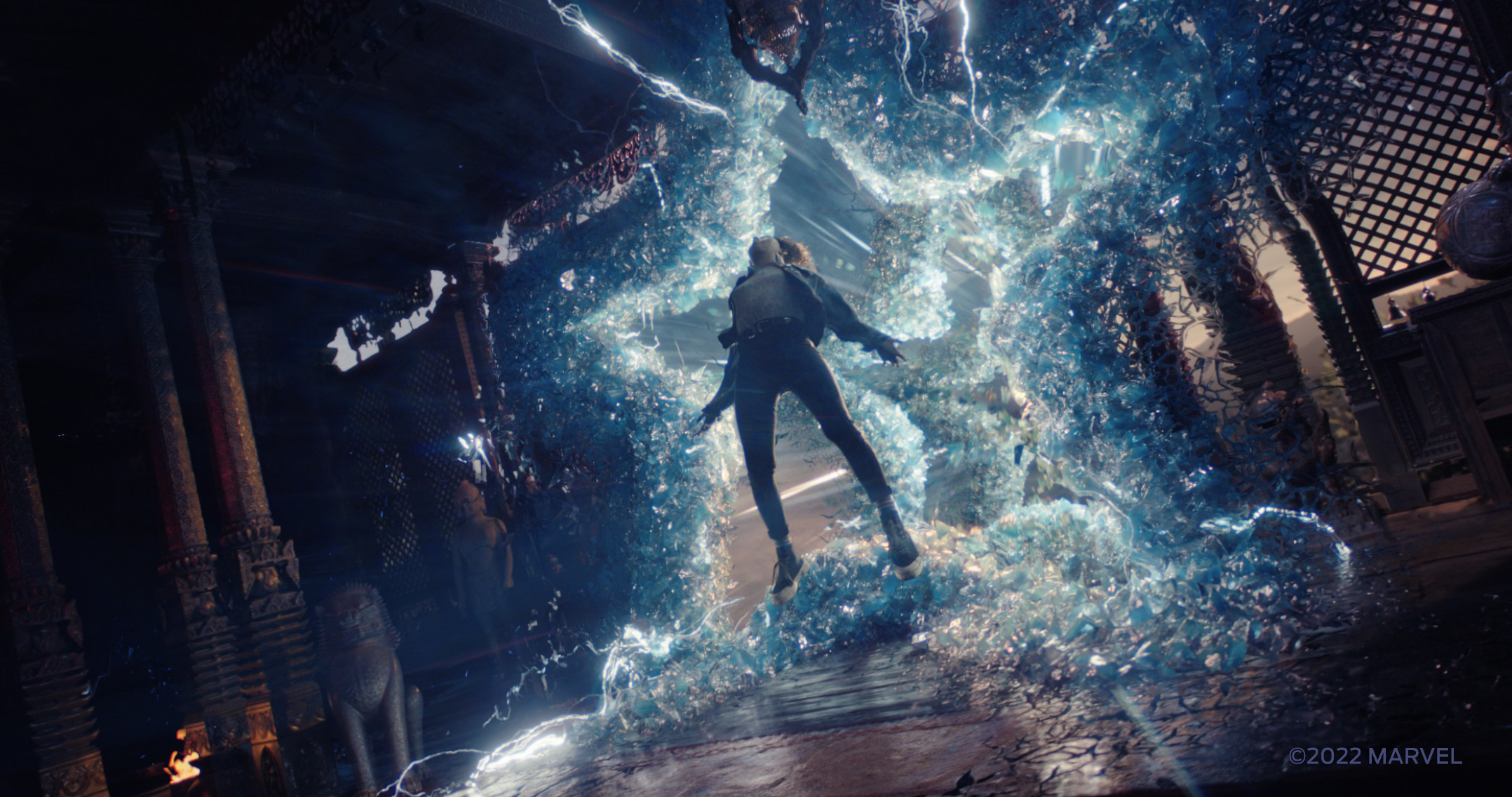
America’s Portal Power
Doctor Strange in the Multiverse of Madness sees the return of Wanda Maximoff (Elizabeth Olsen), the Scarlet Witch, who pursues America Chavez with the intent of absorbing her power to open portals between parallel universes. Chavez’s portal effect was developed in collaboration with Weta Digital. “The FX was very tricky to design,” says Wajsbrot. “From iteration to iteration it transformed from lightning-style to more of a crystal look, to the final effect with the sub-portal inside.”
“The idea was that the portal would ‘shatter the plate’ letting us see other universes through the opening,” expands CG Supervisor Sylvain Degrotte. “Early on, our VisDev team lead by Horacio Mendoza and Owen Jackson, came up with a 2D motion concept which was very well received. From there we moved on to a 3D version that would sell the idea that it physically exists in the scene. This journey led us to the final concept, a portal made of crystal.”
The stability of the portal edges correspond to America Chavez’s ability to control her power. As she feels more confident with it, the portal shape becomes increasingly stable. Framestore’s FX team developed a setup in Houdini to follow this logic – the borders of the star portal would constantly shatter and release debris to the other universe, and then immediately start to reconstruct itself. “The speed of the regeneration causes a stress on the outer border of the portal, which causes it to crack. Additionally, the portal acts as an airlock and would suck in some props and particles around it. It was a very challenging effect that was very much art directed to tell the story,” says FX supervisor Jimmy Leung.
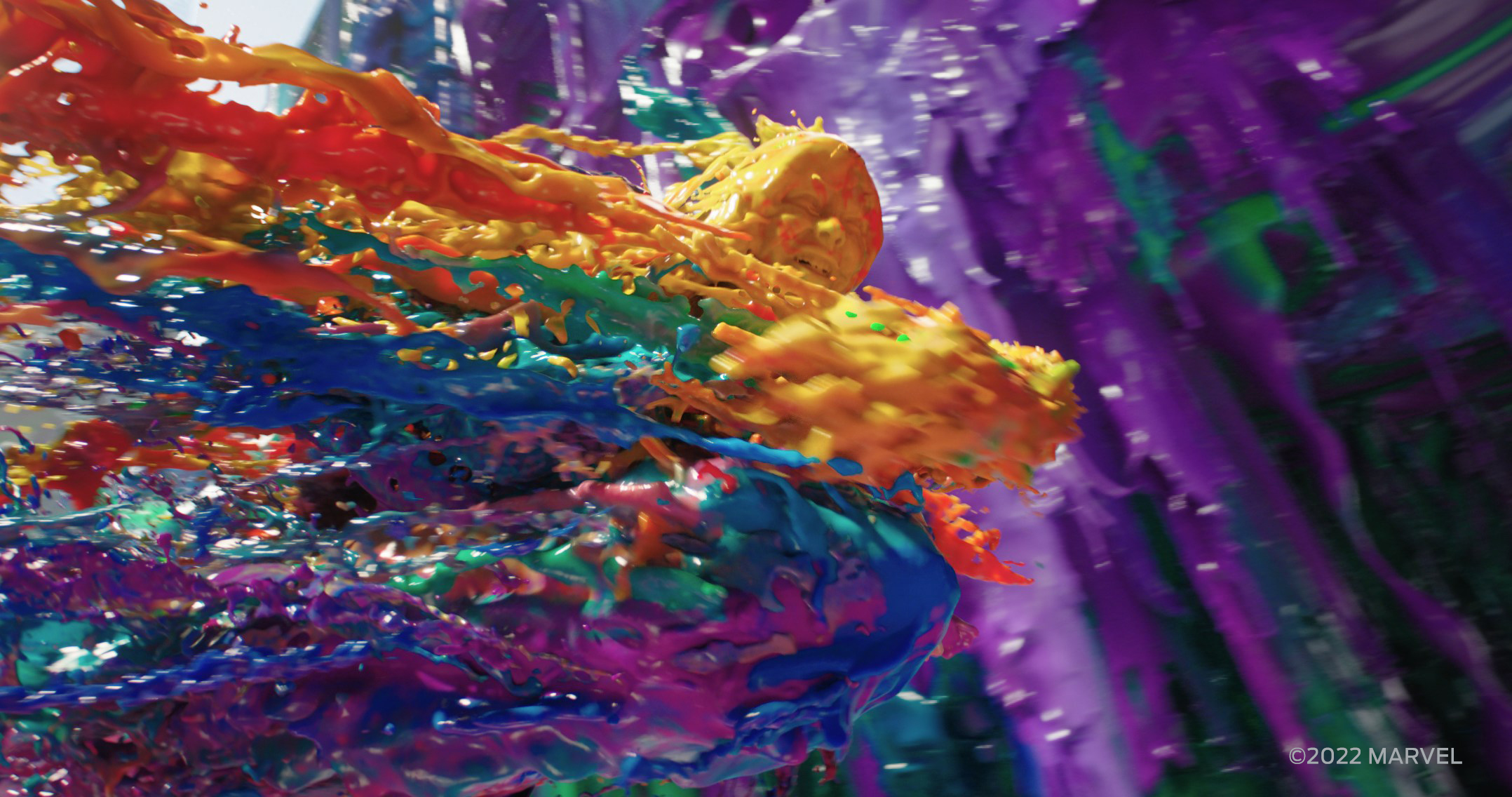
Into the Multiverse
Doctor Strange saves Chavez from Maximoff, signalling the start of an incredibly challenging and creative VFX sequence, as the pair jump through 20 wildly different universes. “The portal ride was one of those dream sequences where the team really gets to flex its creative muscle,” says Wajsbrot. “It’s almost like being given a blank sheet of paper to work with: okay, why don’t we add some dinosaurs here? A Hydra Easter egg there? A nod to Escher there? Some giant bees? It certainly wasn’t easy, but I think everyone was exhilarated when the end result came together so perfectly.”
Framestore’s VFX and Animation teams delivered the previs for this sequence, which went through multiple iterations before establishing the final effects. “What began as a freefall evolved into multiple snapshots of the same New York street spliced throughout different universes, the city environment morphing from bricks and glass to pipes, to bones, to jungle” continues Wajsbrot. As Doctor Strange tumbles through, the sequence gets increasingly surreal, with the surroundings traversing 2D animation, pixelated squares, and even a universe made entirely of paint. “While we were doing previs, we started gathering ideas for the different worlds” says Wajsbrot. “A lot of different departments helped the creative process, from the art department, the VisDev department, DMP – ideas could arrive from anywhere within the team, and the best ones made it into the sequence.”
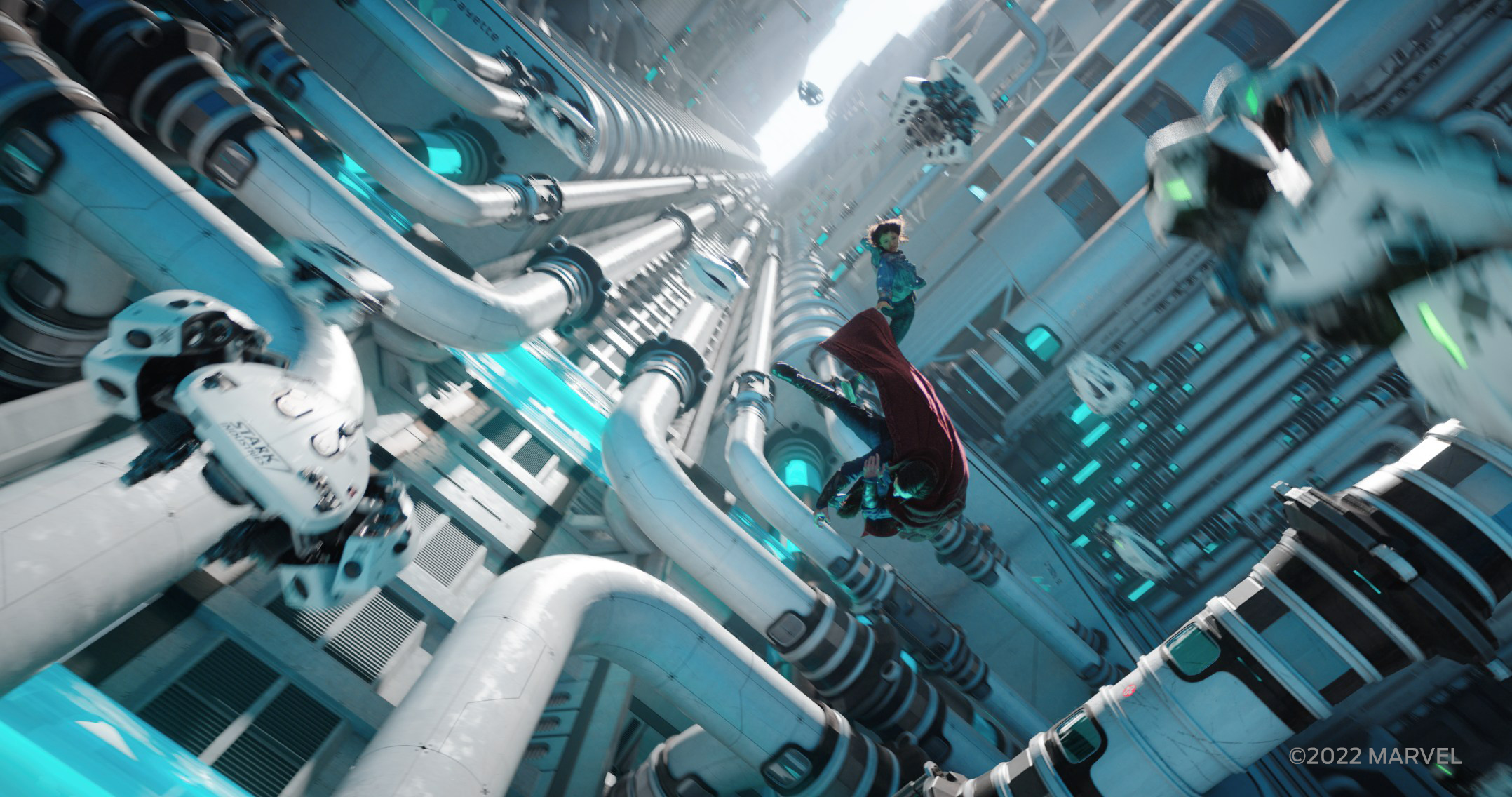
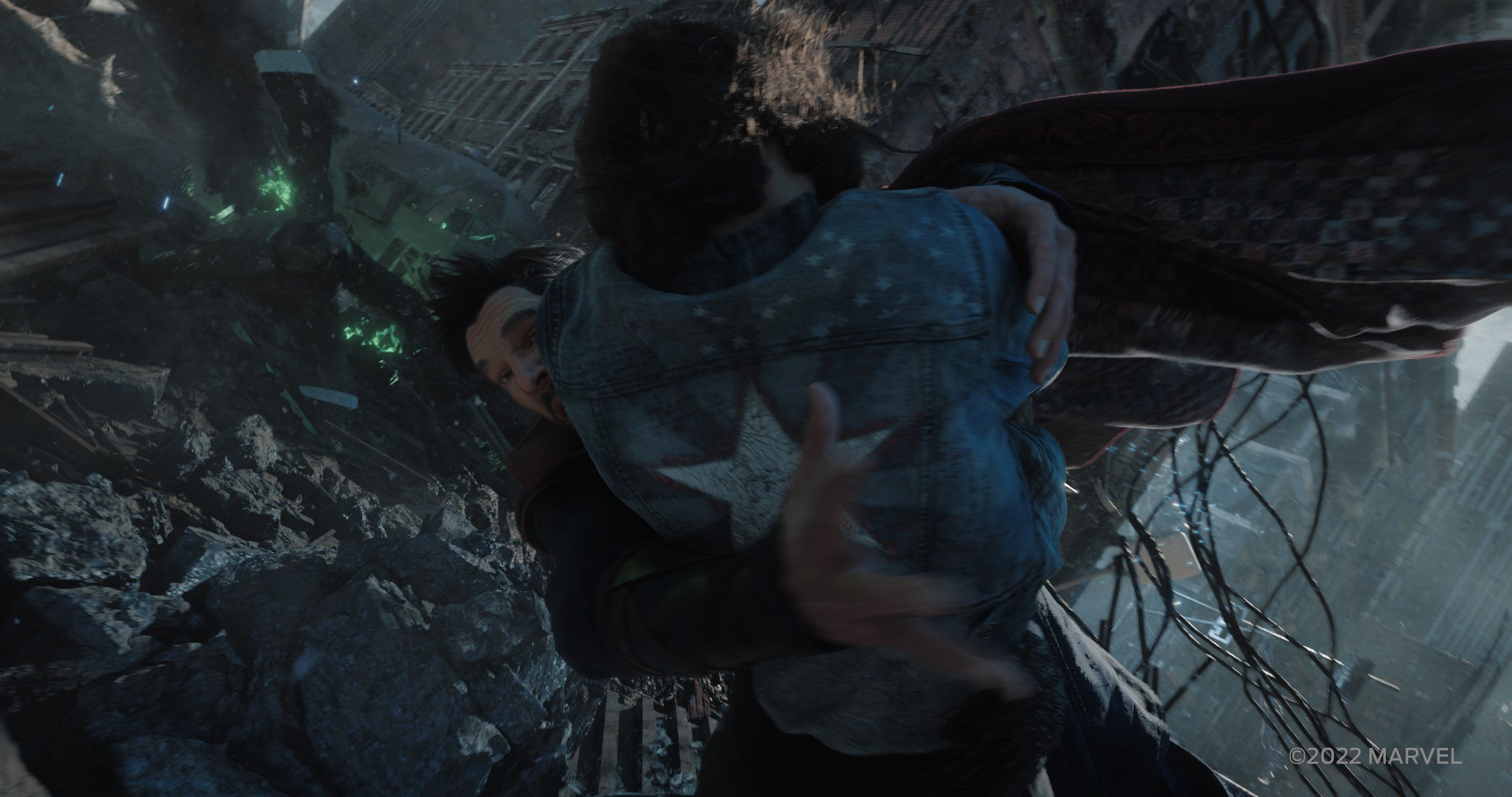
“20 unique individual worlds over the course of 40 seconds is no mean feat,” comments Chandler. In its earliest iterations, the portal ride sequence consisted of approximately 12 worlds, which needed to be built in 3D, and a handful of 2.5D DMP projected worlds. Each environment had to be unique, and follow the lines of the New York City street that the client created. “We wanted to get an early start, so we began by creating a previs of each world. Once the client had approved, we started gathering and creating any development we needed to construct them,” says Chandler. “This was done by working on a purely previs environment in collaboration with the Animation team, to get a general feel for the shots and the different worlds we could be moving through.”
“Our Animation Lead Mike Brunet came up with some great ideas, so from the very beginning we knew that we wanted to do the jungle, paint, and cube worlds. The rest we got to dream up from scratch, which was such an amazing thing to be able to do,” adds Chandler.
“Once we had a first version of our core environments, we quickly realised we needed to add some life to each world,” comments Wajsbrot. “We added giant bees in the honeycomb world, fish to the underwater world, some Stark Industries drones in the pipe world..the list goes on. It was important to make each universe a tangible place, instead of just a background that flashes by.”
As work on the sequence continued, a further eight full CG worlds were added to the roster. “This is what we as environment artists do best,” says Chandler. “To remain on schedule, we had to do it in a highly accelerated manner. We started by creating a mini pipeline within the environments team to create models and textures, to then feed the artists doing the layout, lookdev and lighting.” This method allowed the team to keep a steady flow of content going to the client for approval as each of the worlds was brought to life.
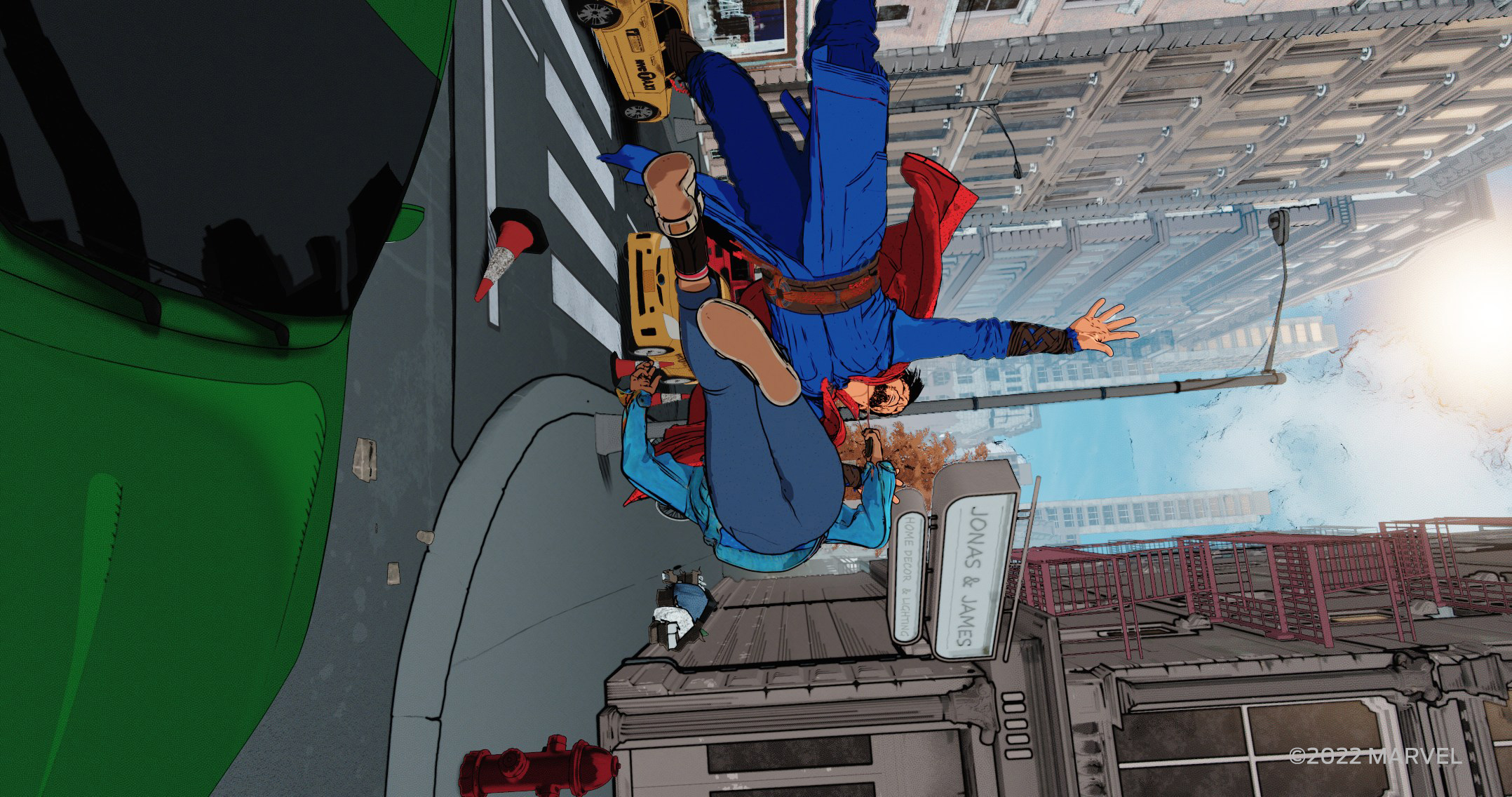
“Comic book world is one of my favourites in the finished sequence but it was very tricky to produce,” continues Chandler. “We had to come up with a way of projecting cartoon drawn lines and reflections into our CG cartoon world environments, sketching moving shadows and drawing in building details and on moving vehicles window reflections.”
“Cube World was a real challenge too, we went through a variety of iterations for this effect,” adds Lyddon-Towl. “The development started with scattering cubes on the surface of Strange, before eventually going down the route of dicing him.” Effects Technical Director Nacho Doctor Gonzalez experimented with different levels of slicing to create interesting variation over the face and bodies. “I am proud of what we produced, and think the final output looks like a beautiful blend of Picasso’s cubism with influence from the abstract work of Dalí,” says Lyddon-Towl.
For this sequence, as well as others throughout the film, Framestore led the development of the digital doubles of Doctor Strange, Chavez, and Wong. “We made several digidoubles of Benedict Cumberbatch’s character” continues Wajsbrot, “from the opening sequences’ Defender Strange, to our universe’s Doctor Strange. We started by taking scans of Cumberbatch’s face to produce a detailed 3D model, and took great care in replicating the texture of his skin and hair.”
“In the end, what made these fantastic sequences possible was an extraordinarily talented team of artists and one extraordinarily talented production team,” concludes Chandler.
